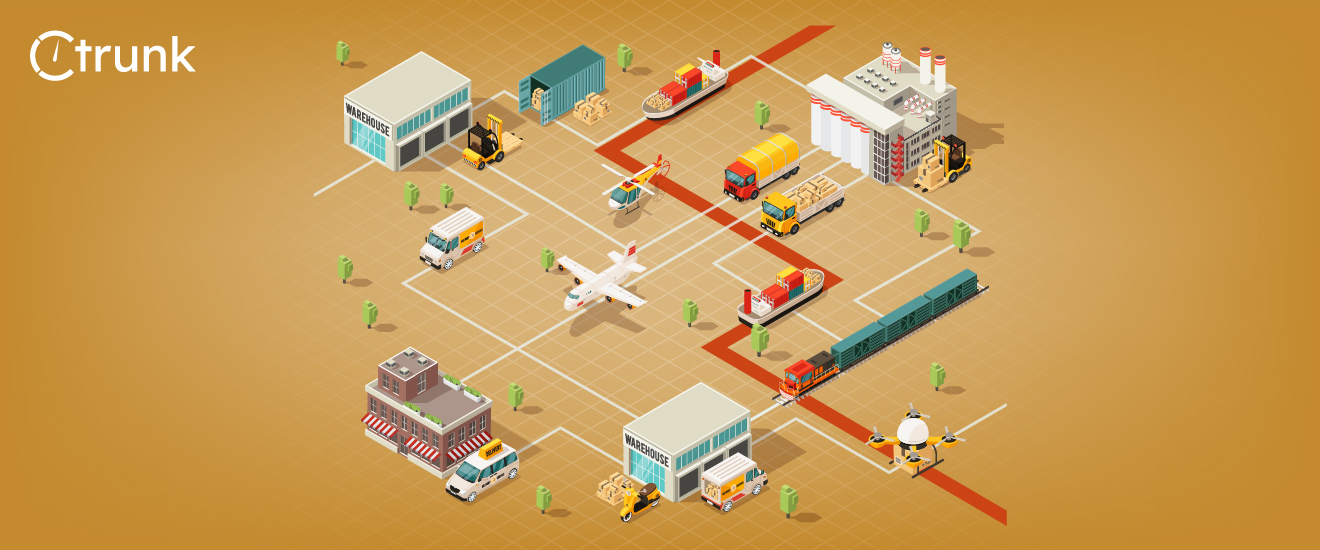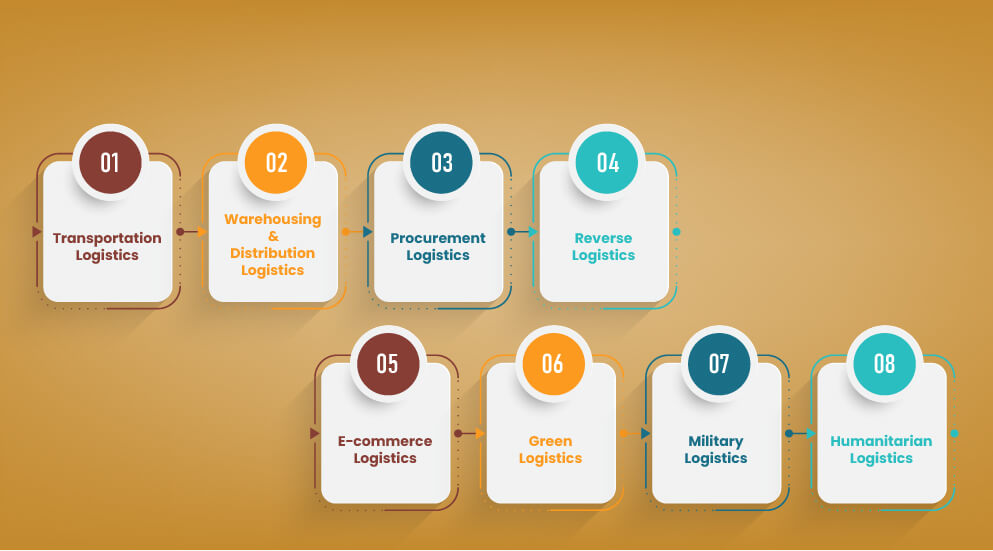Logistics Accounting: Best Practices To Follow

Before exploring different types of logistics, let us understand what logistics actually is. Logistics is part of supply chain management where goods, services, and pieces of information are transferred or transported from the point of origin to the point of consumption according to the needs of customers.
Logistics is a subset of supply chain management where the transportation of raw materials, packaging, and shipment is included within one single company. Whereas, supply chain management involves a larger network of external organizations that work together to deliver products to parties that are not only customers but also vendors, distributors, parcel service managers, etc.
There are various types of logistics in supply chain management.
Let’s explore them one by one.

Warehouse management involves the efficient storage and handling of goods within a facility. It includes tasks such as inventory control, picking, packing, and shipping. Proper warehouse management ensures that products are stored in optimal conditions, and their movement within the facility is streamlined.
The process of moving goods and products within warehouses and various distribution centers is known as warehousing and distribution logistics. Activities like inventory management, packaging, and making sure of proper order fulfillment come under this type of logistics.
The acquisition of basic components for manufacturing purposes is known as procurement logistics. This involves purchasing replacement parts, raw materials, auxiliary supplies, operating supplies for machinery, etc. to make the manufacturing process work. Procurement logistics also focuses on minimizing logistics costs along with maintaining quality standards while acquiring components to make supply chain management more efficient.
The process of managing the return of goods and products by customers to the product owners is known as reverse logistics. It also involves repairs, recycling and disposal of goods. The main aim of reverse logistics is to manage customer returns, handle defective products and reduce waste.
The main concerned parties of eCommerce logistics are online retailers. Things like order processing, inventory management, packaging and last-mile delivery are included in this. Online retailers’ main focus is to make sure that customers are 100% satisfied with their services by leveraging eCommerce logistics.
Green logistics encourages all the stakeholders in the logistics chain to follow eco-friendly practices while carrying out all the logistical tasks in supply chain management. The main goal of green logistics is to increase energy-efficient transportation, maximizing waste reduction and carbon footprint reduction.
Military logistics involves the planning and execution of logistics operations in military organizations. It includes the movement of personnel, equipment, and supplies to support military missions. Military logistics plays a critical role in maintaining the readiness and effectiveness of armed forces.
Humanitarian logistics focuses on providing logistics support in disaster relief and humanitarian aid efforts. It involves the timely and efficient delivery of essential supplies, such as food, water, and medical resources, to affected areas. Effective humanitarian logistics can save lives and alleviate suffering during crises.
Logistics is a multifaceted field that encompasses various logistics types of operations and activities. By understanding the different types of logistics management and their significance, businesses can optimize their operations and deliver value to their customers. Hope you found this blog useful. Follow cTrunk’s blog series for more insights into the logistics industry.